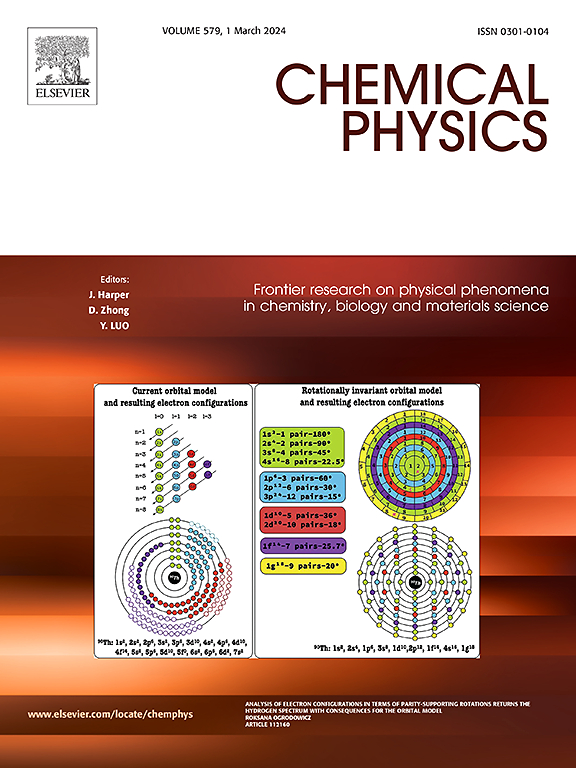Theoretical study on the effect of H2O and ionic liquid on CO2 reduction on Cu surface
IF 2.4
3区 化学
Q4 CHEMISTRY, PHYSICAL
引用次数: 0
Abstract
Electrolyte plays a vital role in the CO2 reduction on metal surface. The aqueous solutions of ionic liquids (ILs) as electrolytes have been demonstrated to be more efficient for CO2 reduction compared to pure ionic liquid. We investigated the effect of H2O and ILs ([Emim][PF6], [Pmim][PF6] and [Bmim][PF6]) on CO2 activation on Cu surface. CO2 prefers to interact with ILs by cation alkyl and anion, and the interaction is stronger than that between CO2 and H2O. On Cu surfaces, the physical adsorption energy of CO2 co-adsorbed with H2O is close to that co-adsorbed with ILs due to the change of interaction pattern of CO2 with ILs. H2O and ILs can both be beneficial to the CO2 reduction. However, H2O plays more important for CO2 activated adsorption and reduction reaction. ILs can significantly enhance the solubility of CO2 in electrolyte.

H2O和离子液体对Cu表面CO2还原作用的理论研究
电解液在金属表面的CO2还原中起着至关重要的作用。离子液体作为电解质的水溶液已被证明比纯离子液体更有效地减少二氧化碳。研究了水和ILs ([Emim][PF6], [Pmim][PF6]和[Bmim][PF6])对Cu表面CO2活化的影响。CO2更倾向于通过阳离子、烷基和阴离子与ILs相互作用,且相互作用强于CO2与H2O的相互作用。在Cu表面上,由于CO2与ILs相互作用模式的改变,CO2与H2O共吸附的物理吸附能接近于与ILs共吸附的物理吸附能。H2O和ILs都有利于CO2的还原。而H2O对于CO2活化吸附还原反应更为重要。il能显著提高CO2在电解质中的溶解度。
本文章由计算机程序翻译,如有差异,请以英文原文为准。
求助全文
约1分钟内获得全文
求助全文
来源期刊

Chemical Physics
化学-物理:原子、分子和化学物理
CiteScore
4.60
自引率
4.30%
发文量
278
审稿时长
39 days
期刊介绍:
Chemical Physics publishes experimental and theoretical papers on all aspects of chemical physics. In this journal, experiments are related to theory, and in turn theoretical papers are related to present or future experiments. Subjects covered include: spectroscopy and molecular structure, interacting systems, relaxation phenomena, biological systems, materials, fundamental problems in molecular reactivity, molecular quantum theory and statistical mechanics. Computational chemistry studies of routine character are not appropriate for this journal.
 求助内容:
求助内容: 应助结果提醒方式:
应助结果提醒方式:


